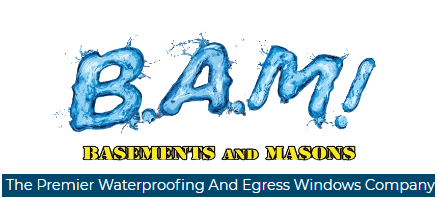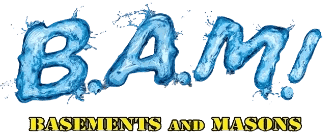Water damage in your basement can be a homeowner's nightmare. Whether it's caused by a burst pipe, heavy rainfall, or flooding, dealing with the aftermath can be very overwhelming. With the right approach and prompt action, you can effectively clean and restore your basement back to normal in no time. Let’s look at some essential tips for cleaning the basement after water damage, ensuring a safe and efficient restoration process.
Always Prioritize Safety First
Before heading into the flooded basement, ensure your safety and the safety of others. Turn off the electricity to the affected area to avoid potential electrical hazards and electrocution. If standing water is high, it's advisable to wear protective clothing, including rubber boots and gloves, to prevent contact with contaminated water. Also, it's never a bad idea to wear a mask to avoid breathing in pollutants.
Contact your homeowner’s insurance also to see if anything is covered with the water damage.
Start Removing Water and Damp Items
The first step in the cleanup process is removing the water from your basement. If the water level is significant, you may need to use a pump or wet/dry vacuum to extract the excess water. Once the standing water is gone, use mops, towels, and sponges to soak up the remaining moisture. Next, remove all damp items from the basement, such as cardboard boxes, fabrics, furniture, carpet, pads, and rugs. Mold can start growing within 24-48 hours, so it is very important to act quickly to prevent further damage and mold.
Thoroughly Dry the Area
Properly drying the basement is essential to prevent mold growth and further structural damage. Increase air circulation by using fans and opening windows if weather conditions permit. Consider renting industrial dehumidifiers to expedite the drying process and maintain humidity levels below 50%. You can also hire a water restoration company to do all the work for you.
Clean and disinfect the basement
Once you have removed all the water, use a combination of fans and a dehumidifier to thoroughly dry out the area. If you can, open windows to help get the air constantly circulating. If your basement or flooded area has drywall that was soaked with water, cut away the affected areas to prevent mold from growing. Once the area is completely dry, use a disinfectant to remove bacteria that was present in the water and left behind.
After the basement is completely dry, it's time to clean and disinfect all affected surfaces thoroughly. Use a mixture of mild detergent and water to clean walls, floors, and any salvageable items. For disinfection, you can use a solution of one cup of bleach mixed with one gallon of water. Be cautious not to mix bleach with other cleaning products as it can create harmful fumes.
Inspect and Repair Damaged Items
Carefully inspect all items that were exposed to water to determine if they can be salvaged or need replacement. Items made of porous materials like insulation and carpet padding definitely need to be replaced as they cannot be cleaned and most likely will have mold on them. For salvageable items, make sure they are completely dry before returning them to the basement.
Address Mold Issues
Mold can be a significant concern after water damage, especially if the basement wasn't adequately dried. If you notice mold growth, it's crucial to address it promptly. For extensive mold problems, it's best to hire a professional mold remediation service. For smaller areas (less than 10 square feet), you can clean it yourself using a mixture of water and detergent. However, if you have respiratory issues or allergies, it's best to seek professional help.
Take Mold Growth Seriously
First things first, take the potential mold growth that can fester in water damaged areas very seriously. Whether your basement has an inch of water in it or a foot, standing water is the perfect place for mold growth to begin. Mold growth can destroy your walls, ruin furniture, damage carpet or flooring, and cause issues in your family’s health. Preventing mold growth should be one of your core missions when cleaning up water damage and don’t be afraid to call in a professional from a water restoration company to conduct mold testing and help make sure it won’t happen again!
Check for Structural Damage
Water damage can compromise the structural integrity of your basement. Inspect the walls, floors, and foundation for any signs of damage. Look for cracks, warping, or bowing, and if you notice any issues, consult a basement waterproofing professional to assess and repair the damage.
Waterproof Your Basement
To prevent future water damage in the future it is wise to invest in waterproofing your basement. This may involve sealing cracks, installing interior drainage systems to direct the water out and away from the home, installing a sump pump and more. Consult with a professional basement waterproofing company can help you determine the best approach for your home’s specific situation and your budget
Call the Best Basement Waterproofing Company in Des Moines
Dealing with water damage in the basement can be very stressful and costly, but with these tips, you can effectively clean and restore your basement. Remember to prioritize safety, remove excess water, thoroughly dry the area, clean, and disinfect, and address mold and structural issues. By taking prompt action and being thorough in your cleaning and restoration efforts, you can regain a dry, safe, and functional basement once again.
If you happen to find foundation, structural issues or want to invest in getting the basement waterproofed to prevent water damage in the future. Give BAM basements and Masons a call for all your waterproofing and foundation repair needs. Founded and locally owned in Des Moines, we are the highest awarded waterproofing and Foundation repair in Iowa. Call us at 515-963-0226 or visit us at www.BAMbasements.com

